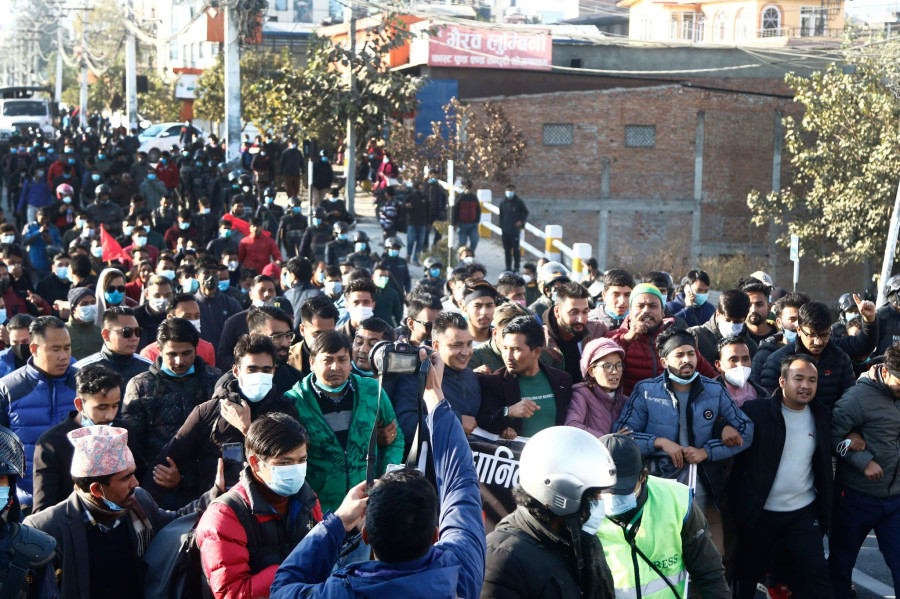Editorial
Pandemic and protests
Precautions are as important as our right to stand up for what we believe in.
Last week, a 28-year-old man from Kathmandu was rushed to Tribhuvan University Teaching Hospital after his health deteriorated fast. According to doctors, the oxygen level had dropped dangerously low, and the man had acquired the coronavirus when he tied the knot on December 7. The man spent three days in the emergency ward before being admitted to the intensive care unit.
Critical care facilities continue to be overwhelmed while life around us has gone back to normal. Test positivity rates haven’t declined, and death rates have increased. Epidemiologists say this is evident of the fact that the coronavirus infections haven’t slowed down, and it is impossible to contain the spread without intervention measures.
As of December 23, Nepal has recorded a test positivity rate of 15 percent over the past 22 days. It is three times higher than the below 5 percent positivity rate threshold that the World Health Organisation recommends before countries relax containment measures. The higher the positivity rate, the higher the chances of transmission. Given these public health risks, protests against the latest political developments are taking place across the country. Infectious disease experts warn the demonstrations could trigger a surge in new infections across the country if transmission risks are overlooked.
Physical distancing will be impossible as more mass meetings and public gatherings bring people in close contact to each other. As we’ve witnessed in previous protests, not all people wear masks or maintain a safe distance. As such, protests make a perfect setting for coronavirus transmission, which, as in the case of the man who got married earlier this month, will be felt in a couple of weeks as Covid-19 has a similar incubation period. In Kathmandu Valley, which has the highest infection rate in the country, this is a dreadful scenario, one that could further complicate our situation that’s barely hanging on.
Earlier in June, in the wake of worldwide protests against police violence and racial injustice, World Health Organisation Director-General Tedros Adhanom Ghebreyesus recommended that protesters follow precautionary measures to protect themselves from the coronavirus and protest safely. He advised people to maintain a safe distance and wear a mask while attending marches. Protests are the riskiest situation to be in, especially since science has already pointed out how the virus transmits in close proximity via pathogens and through people who have no disease symptoms.
Protesting in a democracy is as important as voting, and it is a fundamental right of the public to organise themselves; but protest organisers and demonstrators need to be mindful that we are in the middle of a pandemic and the risks of contracting the disease during protests are real and can even kill people. Leaders and activists cannot ignore these serious concerns and have to re-imagine ways of demonstrating. No matter how strongly we believe in the issues we want solutions for, nothing is more important than our lives.
Earlier this year, youth protesters pressing for an effective and transparent Covid-19 management from the government showed how using technology and holding peaceful and safe demonstrations can also persuade the government to act. We cannot vouch if those who attended the protests didn’t contract the virus or whether protests have been responsible for the surge in new infections. But precautions are all we have, and we cannot afford to disregard them. They are as important as our right to stand up for what we believe in.
There should be no room for careless protests that will push the country further into chaos.




 7.12°C Kathmandu
7.12°C Kathmandu












%20(1).jpg&w=300&height=200)

